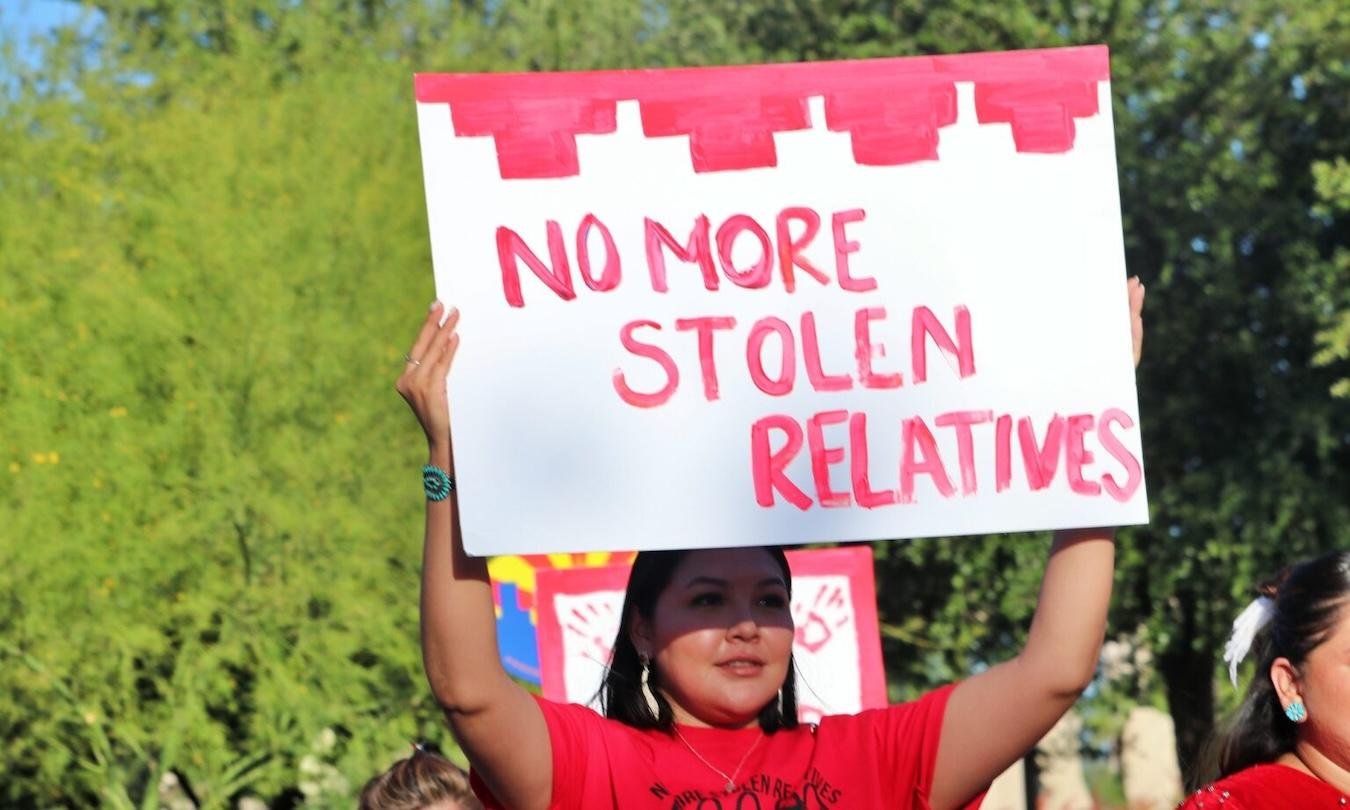arizona
Bill for Indigenous Missing Persons Alert Gains Bipartisan Support After Long Wait

Yolanda Bydonie reflects on the frustration her family faced when attempting to report her cousin, Keisha Kootswatewa, missing. Kootswatewa, a Hopi woman and mother of three, disappeared on March 26, 2022, in Teesto, a community within the Navajo Nation. Bydonie struggled to get the authorities to take the report seriously, emphasizing, “We weren’t taken seriously.”
As the family navigated the bureaucratic landscape, they encountered significant resistance. Initially, the Hopi Police Department refused to take the report, redirecting them to the Navajo Nation Police Department, which then sent them back, citing Kootswatewa’s Hopi identity. “It was a back and forth thing for us,” Bydonie described, noting that it took persistent efforts before the Hopi Police finally took their report—four weeks after her cousin went missing. “We lost time,” she lamented.
Bydonie expresses ongoing concerns about the lack of support from tribal law enforcement, which has fueled her support for establishing an alert system for missing Indigenous people. She believes such a system would enable families to alert the public more efficiently, ensuring that no Indigenous person is forgotten. “It would help a lot of Indigenous people,” Bydonie asserted. Over the years, her family has conducted search parties and shared Kootswatewa’s story through various means to rally community support.
A proposed bill—House Bill 2281—which has gained unanimous support in the Arizona House of Representatives, is striving to develop a Missing Indigenous or Endangered Person Alert System. This system aims to issue alerts for missing individuals, similar to existing Amber and Silver Alert systems. Sponsored by Rep. Teresa Martinez (R-Casa Grande), the bill is set to proceed to the full Senate for further deliberation.
During a recent committee meeting, Martinez highlighted the urgency of this new alert system, designed to fill a gap for individuals aged 18 to 55, who currently lack appropriate alert protocols. She shared the tragic case of Emily Pike, a 14-year-old who went missing for weeks before her body was discovered. “When Emily went missing, no Amber Alert was issued,” Martinez pointed out, advocating for the inclusion and swift action on such cases.
The proposed alert system would only be activated upon the request of law enforcement and would require confirmation that a person is missing under suspicious circumstances. Gila River Indian Community Gov. Stephen Roe Lewis underscored the need for collective action, stating that tribal nations cannot solve the crises of missing and murdered Indigenous peoples alone. He emphasized the importance of multi-jurisdictional collaboration to recover endangered or missing tribal members more effectively.
In Arizona, the data is alarming. More than 10,600 Indigenous individuals were reported missing nationwide in 2023, with a significant portion of those cases affecting people over 18. Arizona ranks third in the country for unresolved missing Indigenous cases, with numerous Indigenous women and girls also reported missing. According to Valaura Imus-Nahsonhoya from Arizona’s Missing and Murdered Indigenous Peoples Task Force, the lack of response from law enforcement is all too common. “Many families just didn’t have the help,” she remarked, noting the critical gap this proposed alert system seeks to address.
For advocates like April Ignacio, the progress of HB2281 represents years of persistent advocacy and a transformative moment for Indigenous communities in Arizona. She reflected on the importance of having their voices heard in state legislation, saying, “We’ve been planting these seeds, and for our representatives to be able to get this passed is really important.”
Elayne Gregg, who lost her daughter to an unsolved abduction case, echoed the necessity of the alert system. She stressed that Indigenous people face a higher risk of going missing compared to other demographics, underscoring that prompt alerts could save lives. As community advocacy continues, the hope remains that this alert system will offer vital support to families in distress.


















